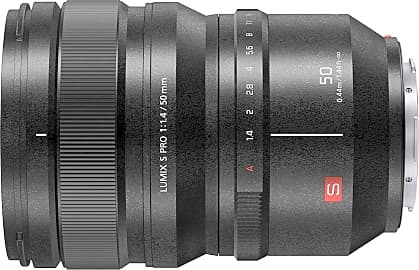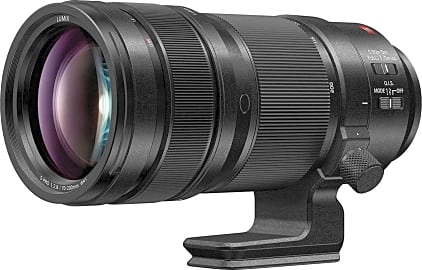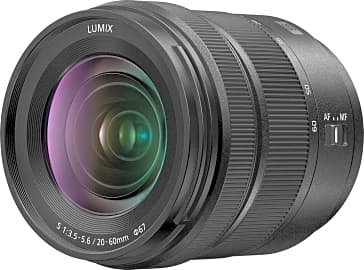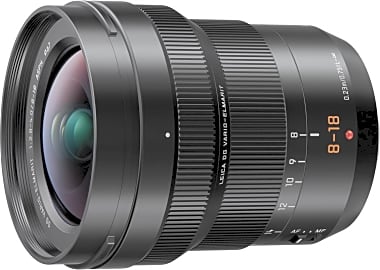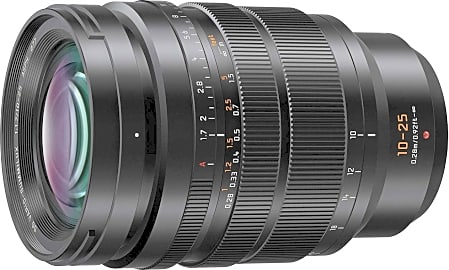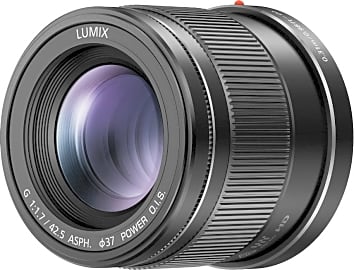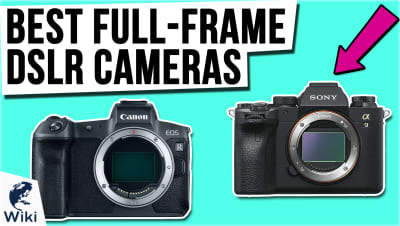The 10 Best Panasonic Lenses

This wiki has been updated 40 times since it was first published in June of 2016. If you're looking to improve your landscape, portrait, close-up, distance, or action shots, check out our comprehensive selection of Panasonic lenses for their impressive series of mirrorless camera bodies. Offering an array of features to meet any need, they are available at prices suitable for hobbyists through to professionals, ranked here by versatility, optical quality, and performance. When users buy our independently chosen editorial picks, we may earn commissions to help fund the Wiki.
Editor's Notes
May 12, 2021:
With what we would argue are most of the company’s top offerings still living on this list, it wound up being a straightforward round of updates for us, without a lot of major changes. The only substantive modification we made was removing the Lumix G Summilux 25mm ƒ/1.4 in favor of the Lumix S 20-60mm ƒ/3.5-5.6, which was released shortly after the last time we updated this list. Users interested in glass with a fixed focal length may still favor the 25mm, but we thought this new model was likely to present better value and versatility for our users on a budget.
We were also excited to incorporate the Lumix S 70-300mm ƒ/4.5-5.6 to our rankings, as it was supposed to be released this April, but it looks like Panasonic’s dragging their feet on this unit’s drop, with some vendors taking pre-orders for the end of the month, but nothing available just yet, so we’ll have to wait until our next round of updates to decide whether it merits inclusion.
With promises hanging over their head of 2021 releases for new mid-level mirrorless bodies to complement the company’s existing full-frame cameras, which have been on the market since 2019, it seems likely that they’ve got quite a lot on their plate, so I guess we can justify cutting them some slack.
March 06, 2020:
One of biggest things to shake up the Panasonic lens lineup in recent months is the introduction of a full-frame mirrorless body to compete with the mirrorless options offered by the likes of Sony, Canon, and Nikon. That necessitated the development of a whole new line of lenses to work with a sensor that's so much larger than the micro four-thirds chips seen in the company's other offerings. Among these new lenses, there are three that really stand out in the Lumix S Pro 24-70mm f/2.8, the Lumix S Pro 50mm f/1.4, and the Lumix S Pro 70-200mm f/2.8. The two zooms in that trio could easily serve event shooters for the majority of their images, while the 50mm makes a phenomenal choice for portraits and shooting video.
These new models also necessitated the removal of several options intended for those smaller sensors, and to pick from among these we prioritized fast, constant apertures while attempting to offer a ranking that had a little something for every scenario. That's why the Lumix G 25mm ƒ/1.7 gave way to the Lumix G Summilux 25mm f/1.4. The latter has a faster aperture and is part of a series made in conjunction with camera and lens legend Leica. It's also why we got rid of the Lumix G Vario 12-60mm ƒ/3.5-5.6 and the Lumix G Vario 14-140mm ƒ/3.5-5.6, whose variable apertures put them more in line with glorified kit lenses than the models that took their places with constant speeds of f/2.8 and f/1.7.
The Micro Four-Thirds Sensor Explained
A full frame sensor, by comparison, maintains a 3:2 aspect ratio with a length of 36mm.
If you’ve ever shot anything on film, whether through a high-end SLR or a cheap, analog point-and-shoot, you’ve likely done so on 35mm film. From roughly the late 1960s to today, 35mm has been the dominant film format. Obviously, the digital revolution in photography has taken a big bite out of its prominence and production, but it’s worth nothing that the most sought-after DSLR cameras on the market use a sensor size — commonly referred to as full-frame — that matches the dimensions of 35mm film.
The dimensions of a digital sensor have more to do with your overall image quality than pretty much any other feature. Generally speaking, larger sensors perform better in low light conditions. Their individual pixels are correspondingly larger than those in a smaller sensor, so they can absorb more light information where little is available. Bigger sensors also exhibit greater dynamic range, allowing you to see more detail in areas of an image that a smaller sensor would leave underexposed or blown out. More sensor area can also pack more pixels together if the ability to blow up an image is important to you, and they do so without sacrificing much of their other performance bonuses.
The advantages of larger sensors become most apparent when comparing images from a DLSR and a cell phone or a point-and-shoot digital camera. The former have more detail, a dramatic sense of depth, and a professional appearance, while the latter often look like they were shot by somebody’s technologically illiterate grandparent.
The four-thirds sensor derives its name from both its size and its aspect ratio. It measures 4/3 of an inch (18mm) long, and maintains an aspect ratio of 4:3. A full frame sensor, by comparison, maintains a 3:2 aspect ratio with a length of 36mm. Clearly, full-frame has its advantages over the four-thirds format, but APS-C sensors, the closest thing on the market to full-frame, aren’t actually that much larger than a four-thirds sensor. That means you’re getting as close to professional quality as possible from a sensor with a tone of consumer-friendly features. By further comparison, most cell phones boast a 1/3-inch sensor, much smaller than four-thirds.
If you think the micro four-thirds sensor is any smaller than its four-thirds predecessor, you’d be mistaken, at least in the sense of it sensitive area. The four-thirds sensor design was deeper, as it allowed for the mirror necessary for SLRs and many DSLRs to relay an image to the viewfinder. The micro four-thirds format is just as long and just as wide as four-thirds, but it functions without a mirror, and take up far less depth.
Why Buy Branded Lenses
It’s not uncommon, given the variety of the industry’s cameras and lenses, to see photographers and filmmakers using one brand of lens on another brand of body. Some shooters make the jump from one brand body to the next, or from one size sensor to the next, and they don’t want to sacrifice the expensive lens collections they’ve developed.
The biggest problem here is one of matching specifications. For the majority of photographic history, lenses were hand-ground, which led to inconsistencies. Stanley Kubrik, who started as a still photographer before becoming a filmmaker, would order a dozen lenses from a company and test them all out, keeping only one or two of the units that performed to his exacting standards.
For the majority of photographic history, lenses were hand-ground, which led to inconsistencies.
Today’s cameras and lenses are made with an incredible degree of precision, however, and while this saves consumers a lot of trouble picking from among lenses, it creates more problems for users trying to mix and match their gear. Despite this, cost and convenience often lead shooters to apply one brand’s lens to another brand’s camera.
This kind of behavior is particularly common in the micro four-thirds realm, since Panasonic and Olympus share the format and a lot of technology and specifications. Tossing an Olympus lens on a Panasonic body might be the only instance where mixing brands is actually a good idea. In all other cases, you’re courting disaster.
The reason for this danger lies in the tremendous precision of modern photographic equipment, and it’s related to our discussion of sensor size. If you try to put a Nikon lens that’s designed for a full-frame sensor on a Panasonic body, you’re going to run into several problems.
The first is that the mounts won’t match, though you could easily solve this problem with a good adapter. The next problem is one of crop factor. Due to the difference in sensor size, a 35mm full-frame lens will perform at an effective focal length of 70mm on a four-thirds sensor, making capturing wide angle shots tremendously difficult. Along those same lines, you’ll find your third problem, namely that you’re going to lose a lot of the light that the lens takes in as it fails to hit a sensor that's too small for its throw.
You could always go with third party lenses that are specifically designed for a Panasonic body and its sensor, but these will present you with the same problems that arise any time you try to save money on electronics by going with a cheaper, off-brand option. Off-brand lenses will generally be less durable, and will produce lower-quality images.
Rise Of The GH Series
Panasonic and Olympus have consistently produced some of the most technologically advanced, user-friendly, and high-quality consumer cameras to date. Their success in the mirrorless approach was a big inspiration for Sony to create their mirrorless alpha series.
Panasonic made a big splash in the professional market with their GH4, however. This micro four-thirds mirrorless DSLR had the ability to record in 4K before any other DSLR on the market. What’s even more impressive is that it could record that high-resolution video directly to the memory card. Even as other companies tried to catch up, they often required an outboard recorder to track 4K.
The company continues to innovate in the GH series, and has added an incredibly capable full-frame mirrorless offering to their lineup, to boot.


